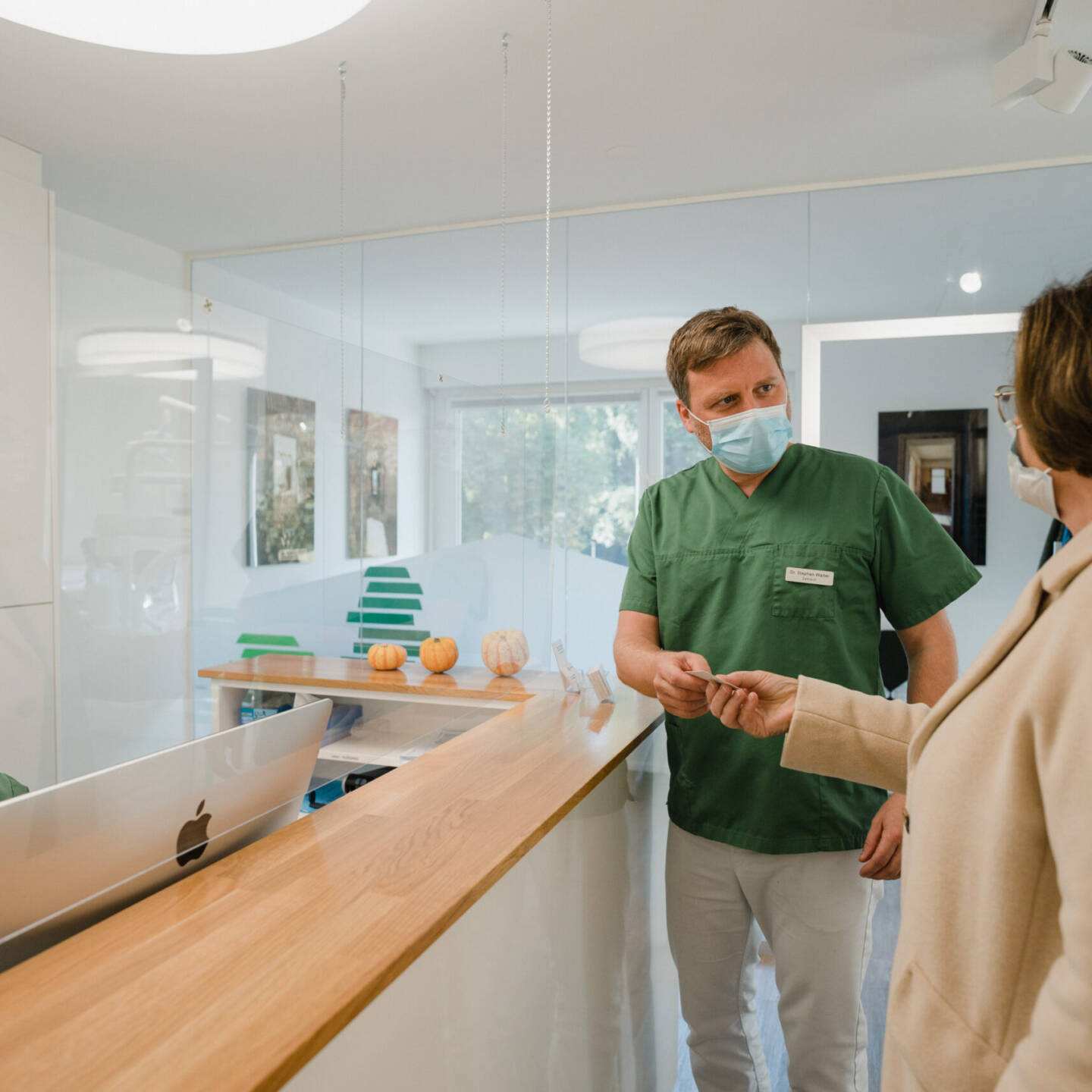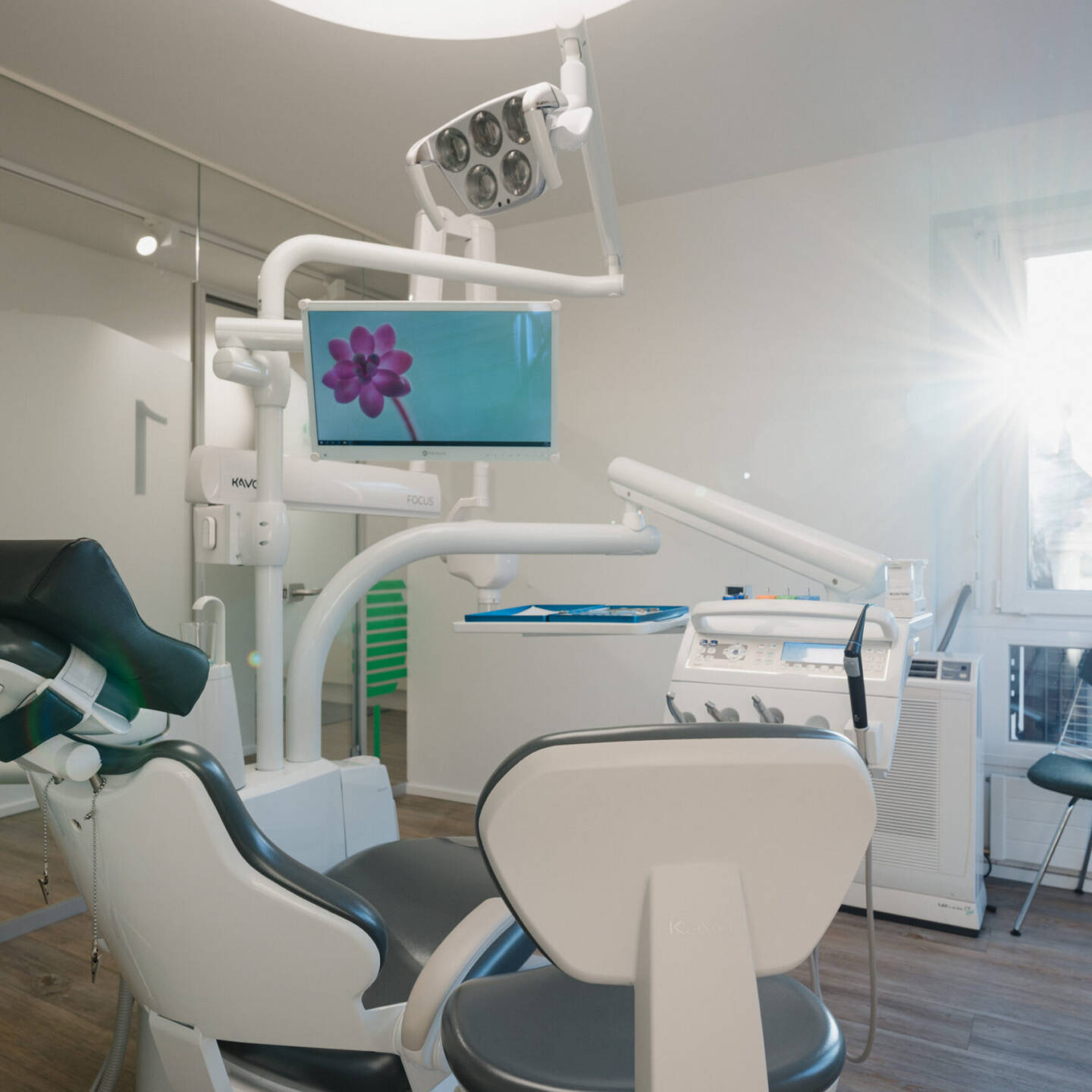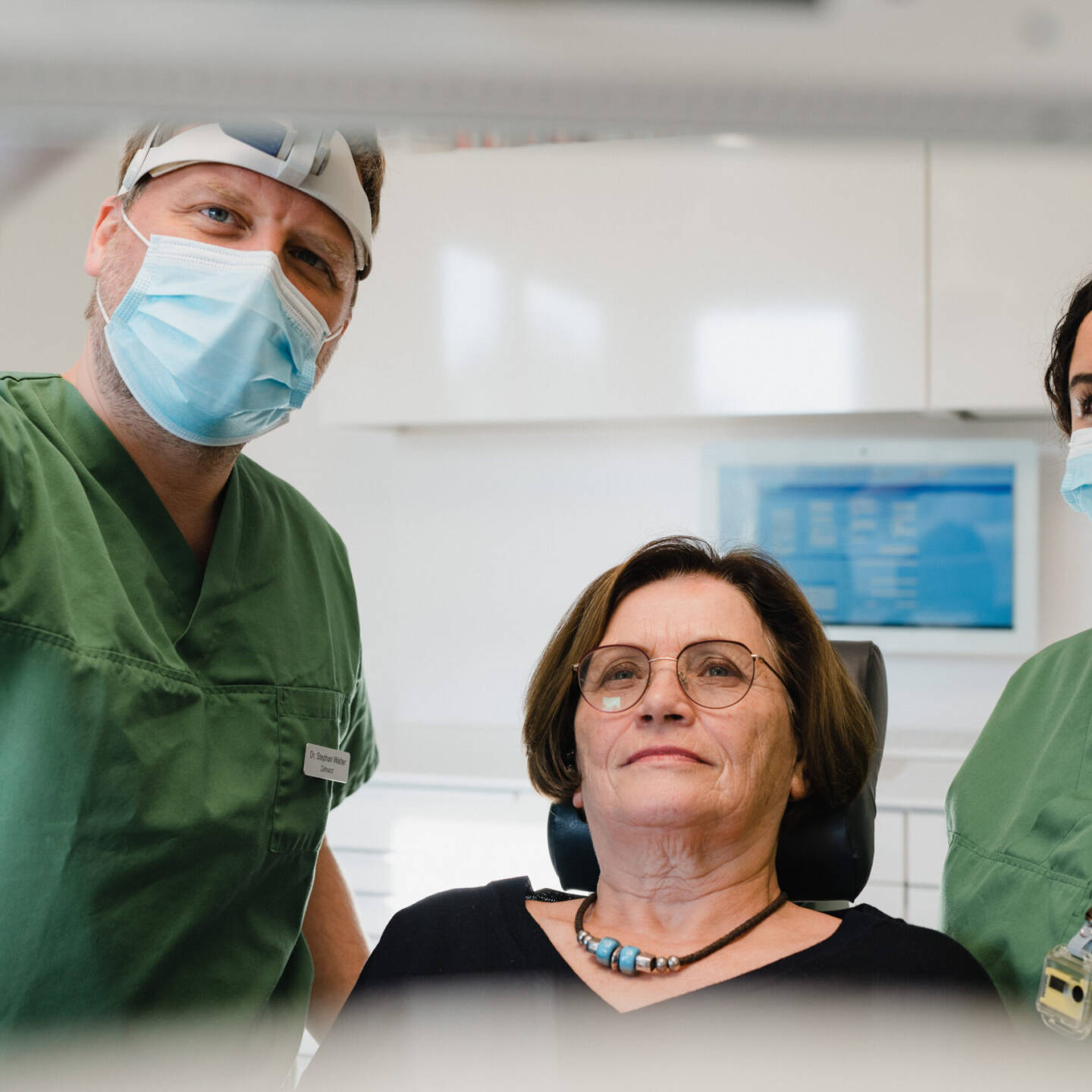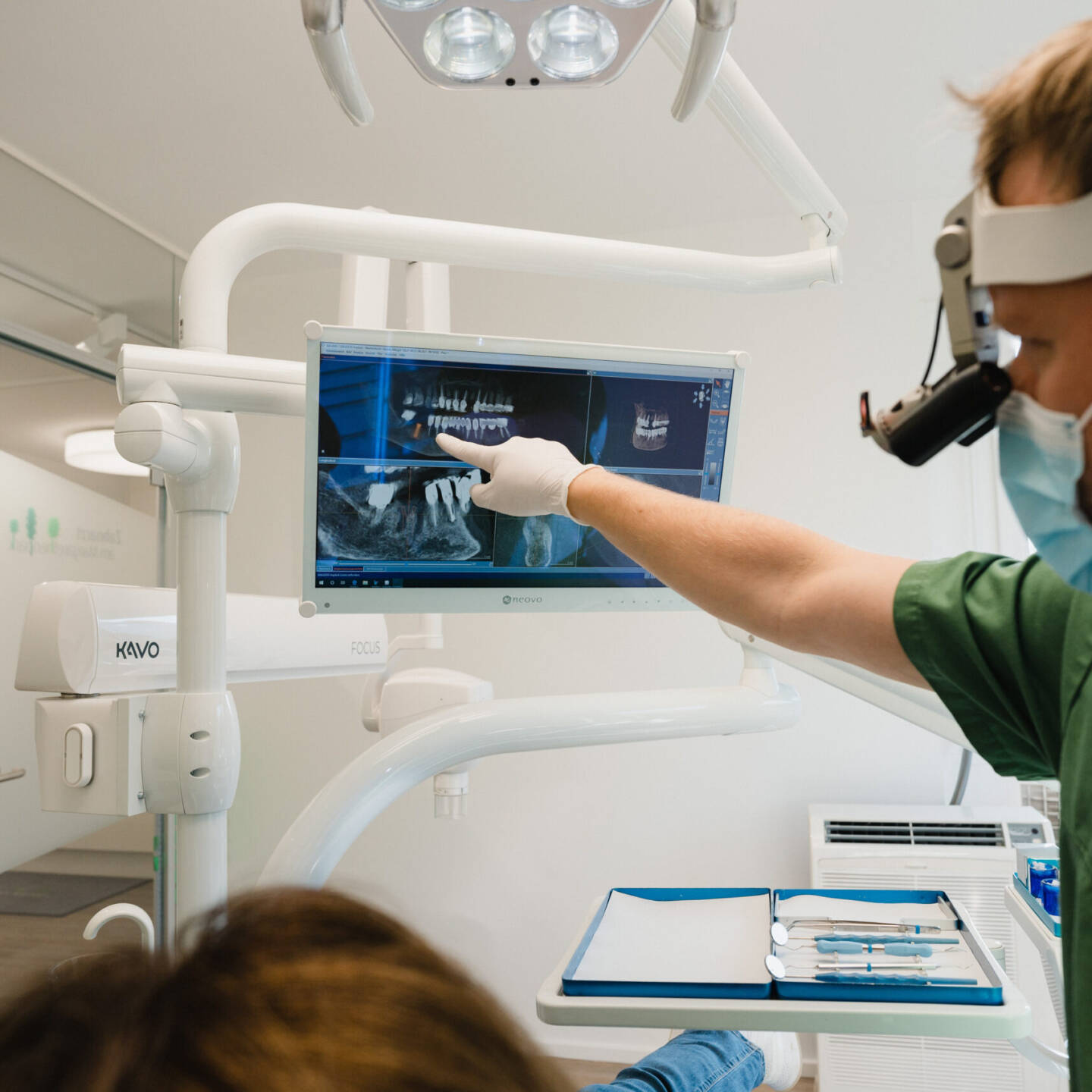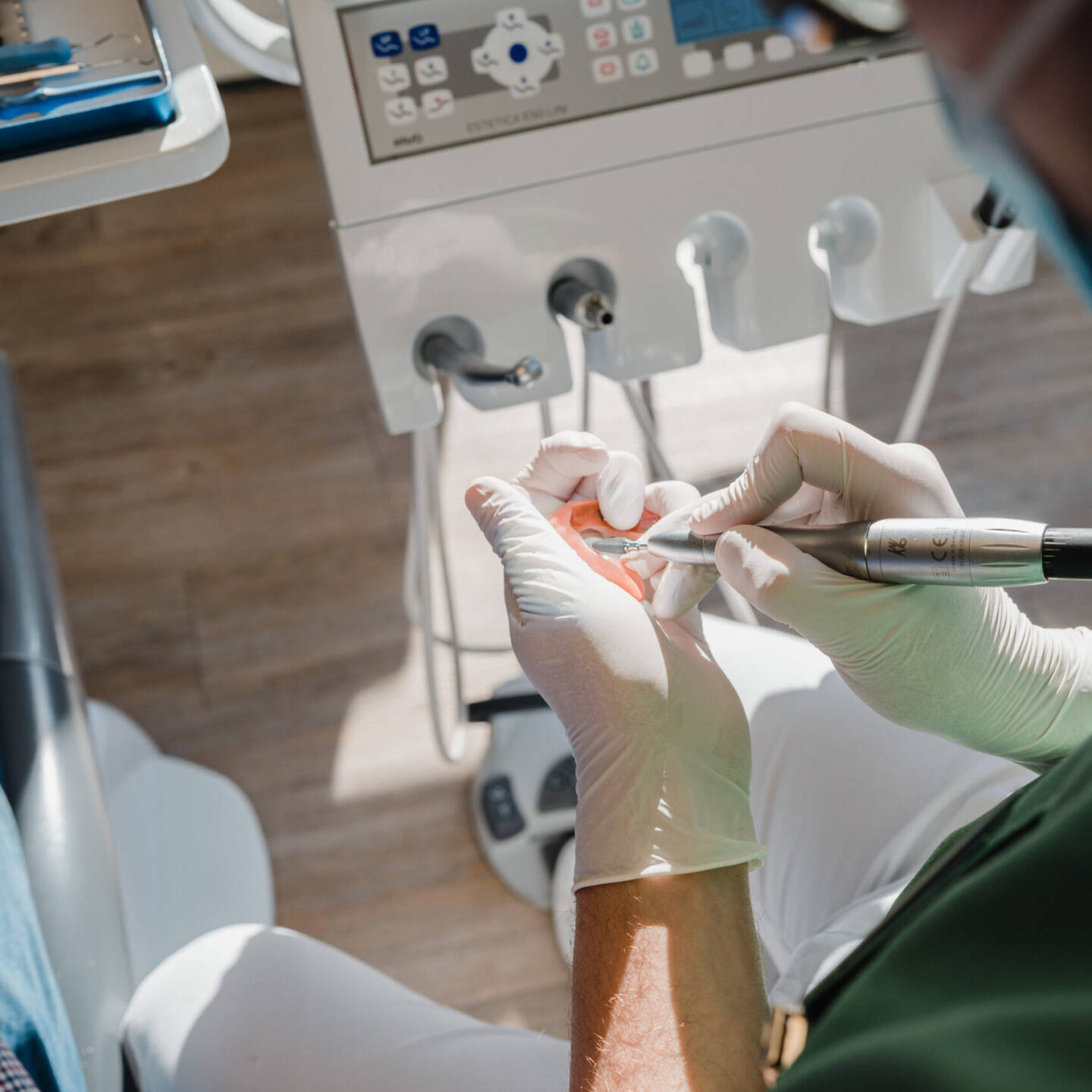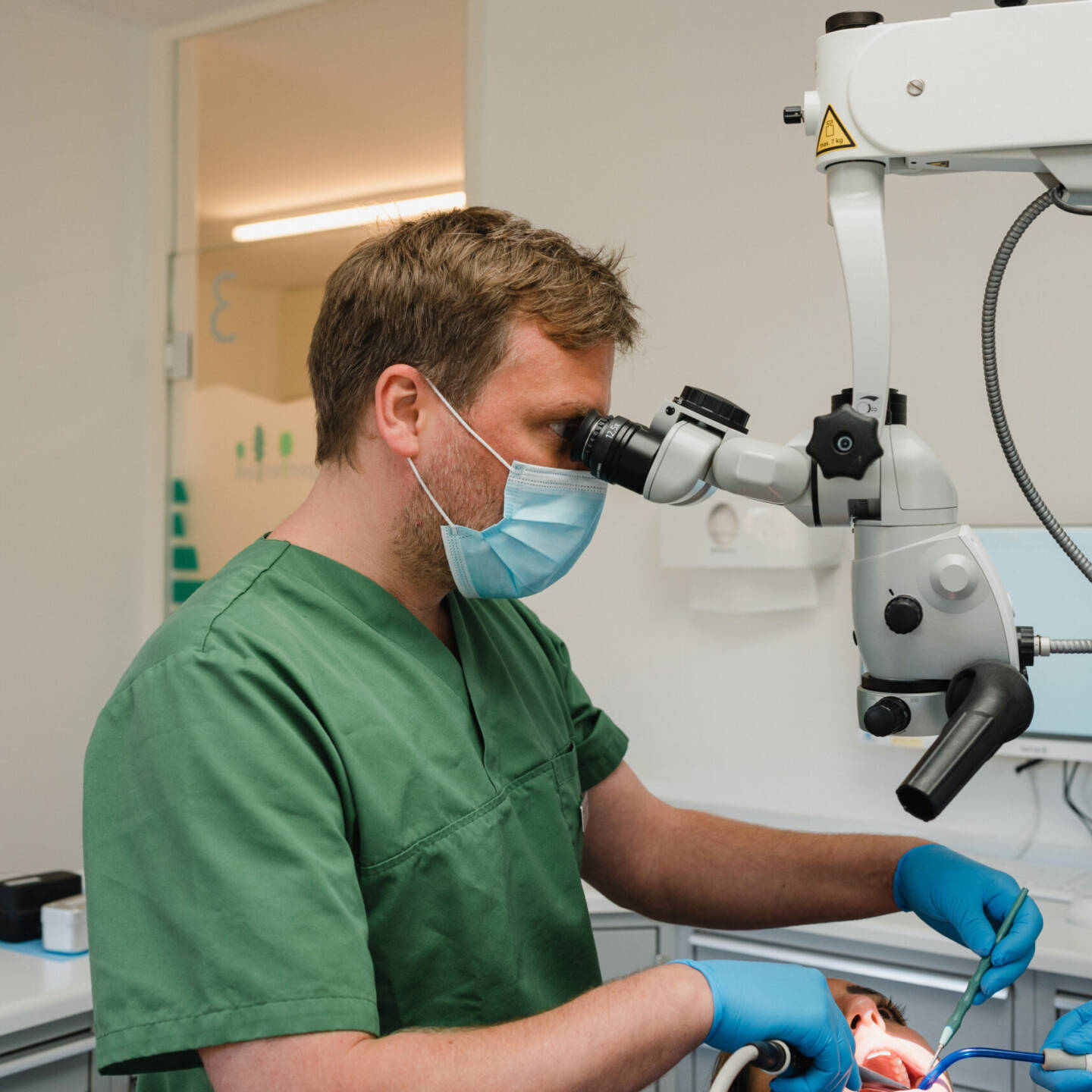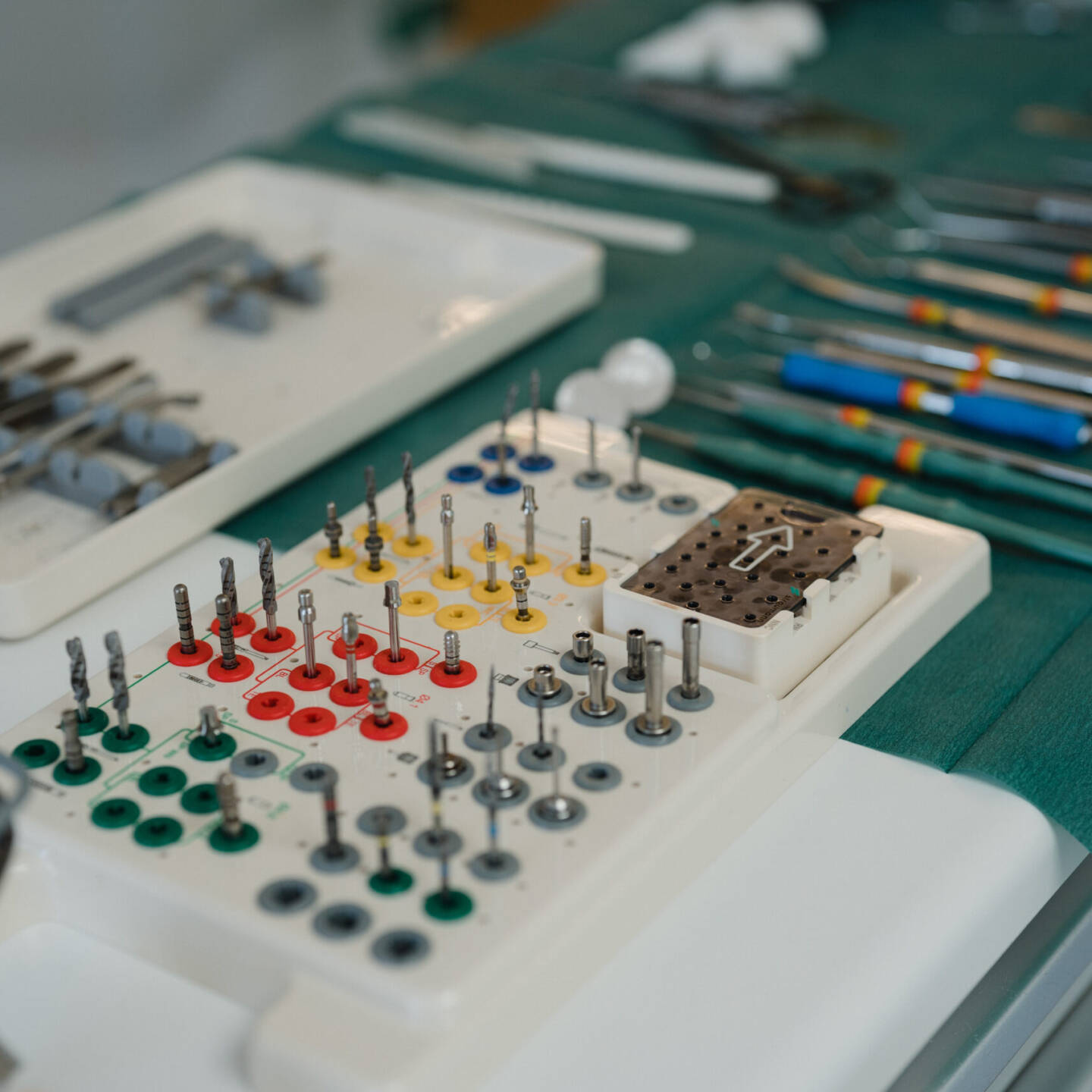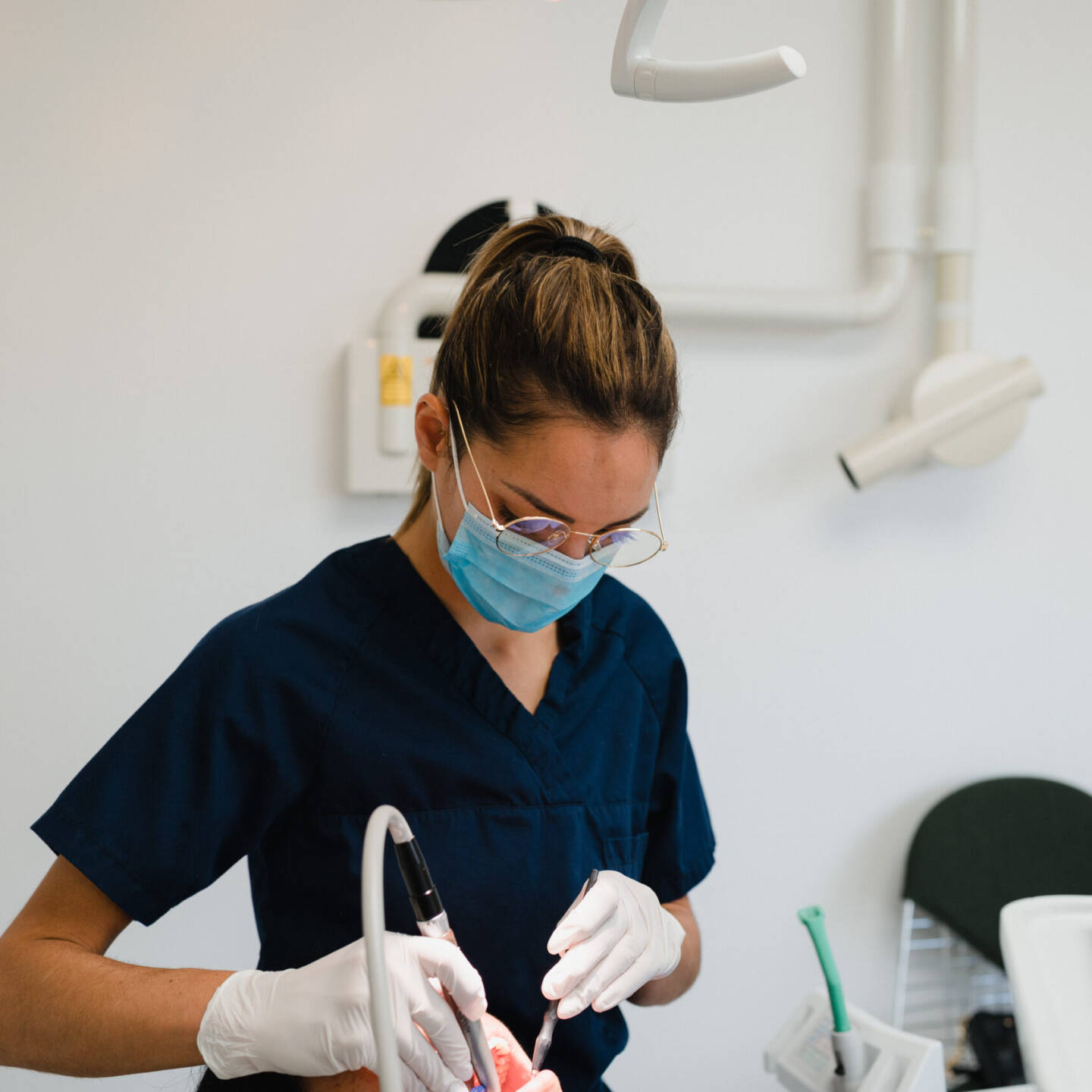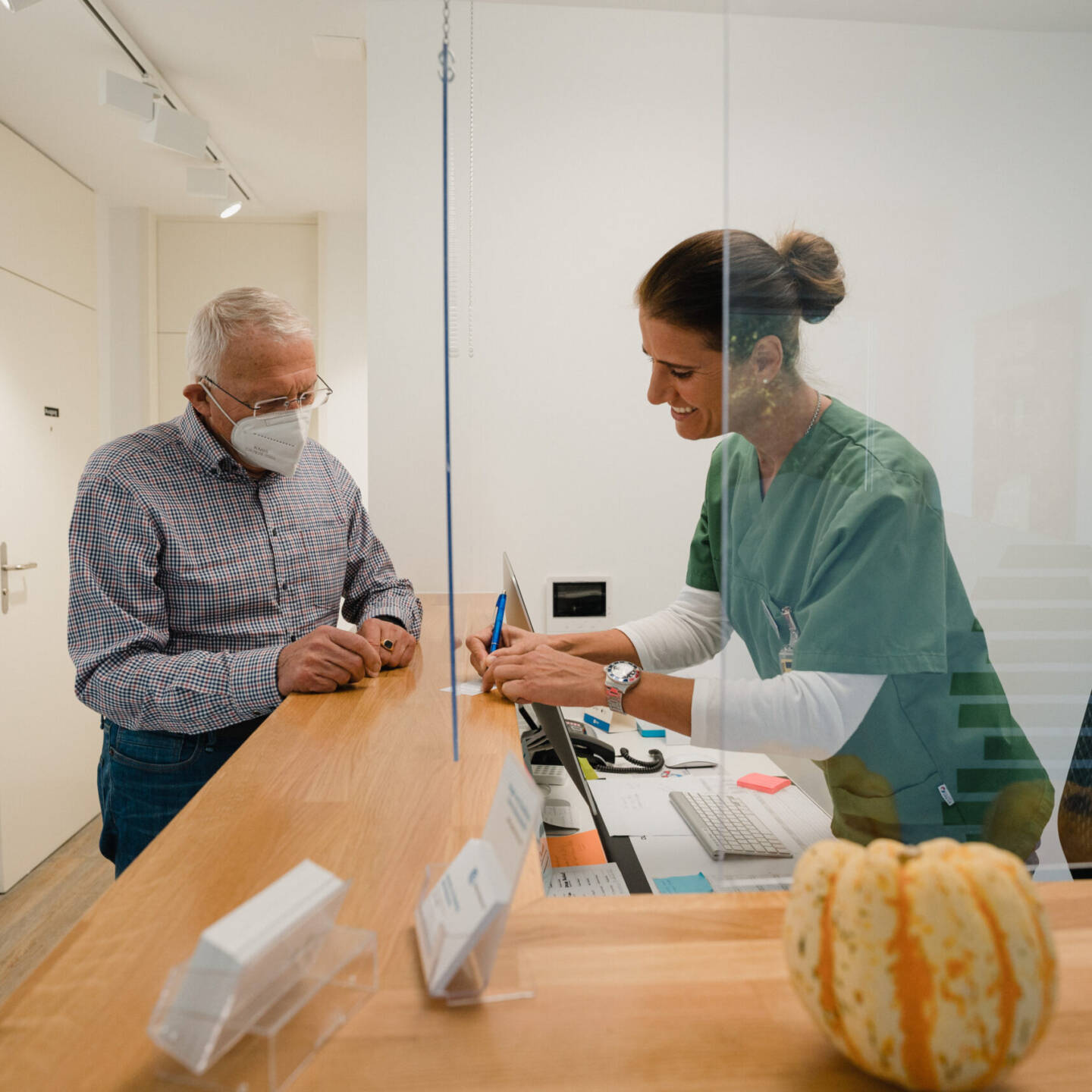Services
Do you have questions about treatment methods or would you like to discuss which treatment suits you best?We are happy to take the time to discuss your concerns.
Dental conservation
Treatments to maintain the count are called “conservative dentistry”. Minimally invasive instruments are used to fill damaged tooth areas in order to preserve predominantly healthy teeth. Mainly plastics are used for this.
Paediatric dentistry
Children should also have regular check-ups at the dentist.
The therapy for children does not differ greatly from the therapy for adults, but it requires a patient, empathetic approach to the little patient.
The focus here is on maintaining the health of the milk teeth until they are replaced by the permanent teeth.
Root canal treatment
In large carious lesions (large “holes”), the bacteria may have penetrated to the tooth nerve. Normally, this circumstance manifests itself with pain on biting, cold or heat.
If the tooth nerve is too inflamed or even dead, the contaminated tissue must be removed. The tooth is cleaned from the inside with very thin files, disinfectant rinsing and medication. Once the tooth is clean, it is sealed tightly with a rubber compound.
Crowns / Bridges
This treatment strategy belongs to the fixed, prosthetic restorations. This means that only the dentist is able to remove them again.
Heavily destroyed teeth, gaps between teeth, discoloured teeth can be wonderfully replaced with single-tooth crowns or dental bridges. Different types of ceramics are mainly used for the production.
Implants
An implant is a dental prosthesis firmly anchored in the bone, one could speak of an artificial tooth root. Colloquially, the analogy “screw in the bone” would be accurate.
Implants have a wide range of applications. They can be used to close gaps between single teeth, they are used to improve the hold of complete dentures and – if several teeth are missing on one side – larger bridges can be anchored.
Orthodontics
Minor orthodontic corrections are possible in our practice. Misaligned teeth can be corrected, for example, by means of non-visible splints.
Prosthetics
Dentures belong to the specialist field of removable prosthetics. This means that the patient is able to remove and reinsert the denture independently.
If several teeth are missing in a jaw or if there is not enough bone to anchor an implant, the replacement of these teeth with a prosthesis is indicated.
Oral Surgery
Oral surgery is limited to outpatient procedures in the oral cavity.
Under strict hygiene measures, displaced wisdom teeth are removed, implants are placed and inflammations of the periodontium are treated.
In order to make exact diagnoses, such as the amount of bone available for implants or the position of a wisdom tooth in relation to the large tooth nerve in the lower jaw, we have a three-dimensional X-ray machine at our disposal.

